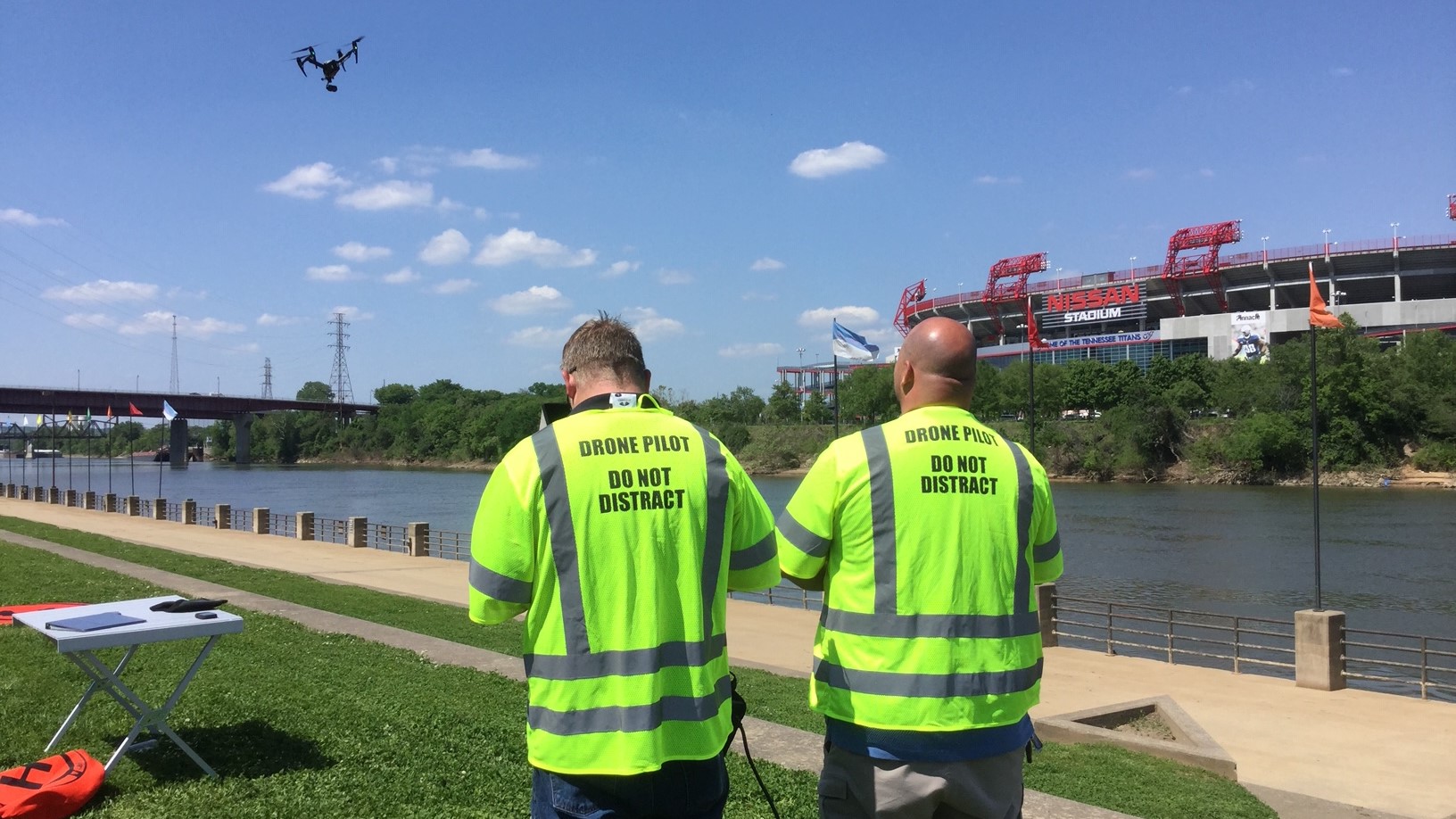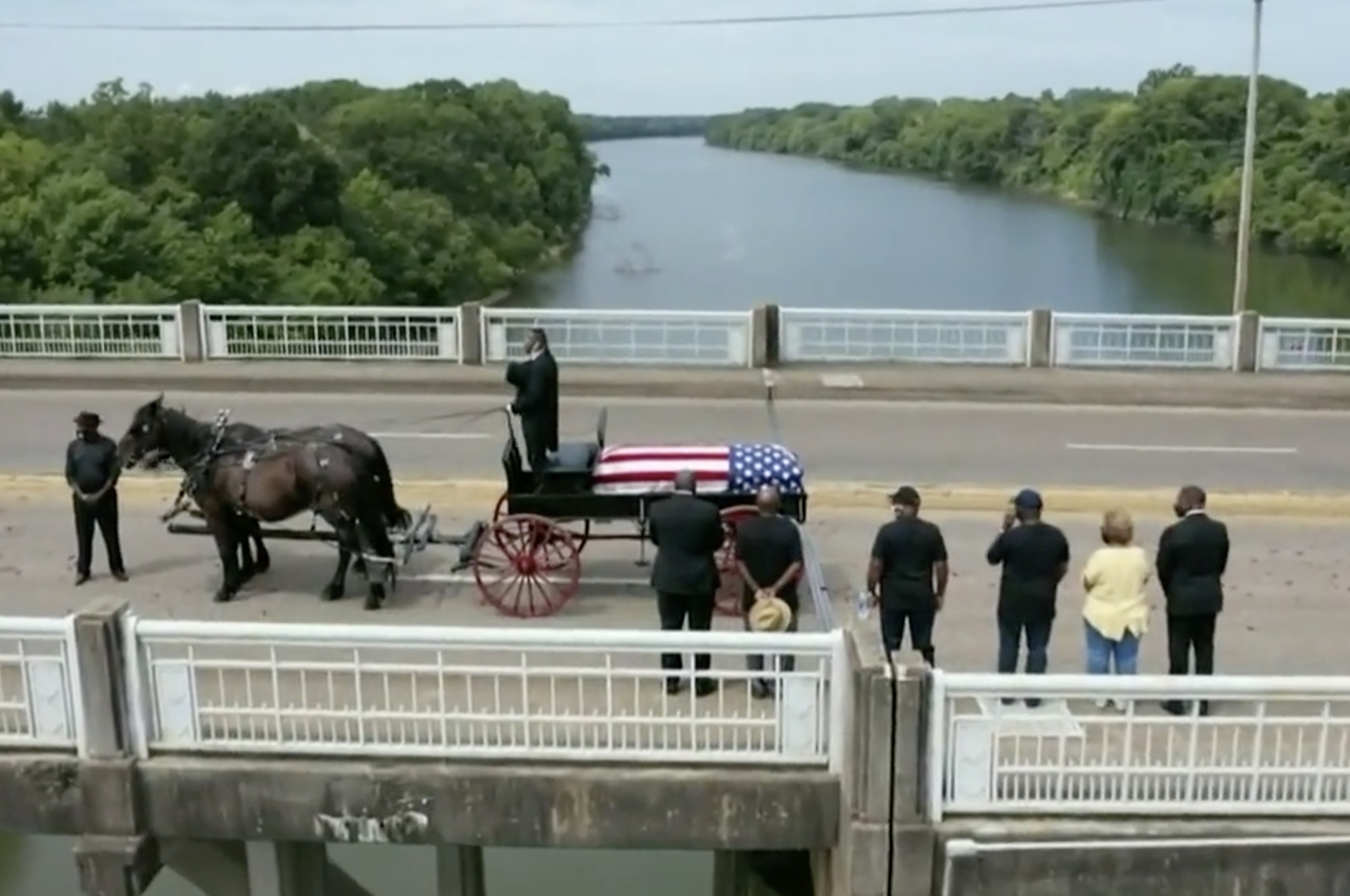Drones Now an Essential Part of TV Broadcasting
Know the rules before you fly

OTTAWA—In August 2016 the Federal Aviation Administration (FAA) implemented Part 107 of its regulations, which governed the use of commercial drones in U.S. airspace. Many of the nation’s TV broadcasters were quick to add drones to their newsgathering arsenal, while carefully training their staff in the legal, proper, and safe use of these remotely-controlled camera platforms.
Fast forward to today, with hundreds of drones now being owned by U.S. TV broadcasting teams, the aerial footage captured on these platforms has gone from being a visual novelty to an essential part of TV newsgathering.
Sinclair Broadcast Group uses drone footage daily in their newscasts, according to Jeff Rose, UAS Chief Pilot with the station group.
“We don’t just use drones for news stories,” he added. “Aerial bump shots of cityscapes, traffic and weather are used throughout the broadcasts.”
Sharri Berg, COO, News & Operations with Fox Television Stations and newly appointed president of Fox Weather, says it would be unusual for Fox to staff a news story without sending a pilot along with a drone. “It has found a place on the regular newsgathering equipment checklist,” she said. “When you go out the door, you make sure to take a camera, microphones, a streaming kit and a drone.”
Becoming an essential newsgathering tool is just one trend with respect to drones and U.S. TV broadcasters. Here are some others that are just as important.
WAIVERS PROVIDE MORE FLEXIBILITY
FAA Rule Part 107 imposes certain limitations on the use of commercial drones. These include only flying visual line of sight (VLOS) missions where the drone can always be seen by the pilot, and ensuring that flights are constantly monitored by an accompanying visual observer so that the pilot can aim and control the drone’s onboard TV camera.
The professional video industry's #1 source for news, trends and product and tech information. Sign up below.
Drones are also restricted from flying over people and at night, however, the FAA is willing to waive sections of Part 107 for operators who have proven themselves to be responsible and reliable, safety-minded pilots. Thanks to the U.S. TV broadcast industry’s consistent adherence to professional drone pilot training and operations, the FAA has issued waivers for night flights and closer-than-usual approaches to people in certain circumstances.
CNN received the very first waiver ever issued by the FAA for operations over people and has used it on several occasions for newsgathering, according to Greg Agvent, senior director of the CNN Aerial Imagery & Reporting unit, aka “CNN AIR.”
“However, because of our concerns over safety and the protection of people and property, the editorial bar has to be very high in order for us to fly directly over people,” Agvent added. “We would rather fly adjacent to them instead.”
Fox has also been able to obtain waivers due to enhanced training. “We provide extensive education and training to our pilots who fly night missions, which teach them how to use lights and navigate safely in this environment,” said Rebecca Kesten, Fox News coordinating producer and drone pilot. “We also train some of our pilots to fly indoor missions and flights over people, which requires additional skills and solid flight experience.”
Much faster ight authorizations have been a major trend in TV drone deployments, thanks to the FAA’s Low Altitude Authorization and Notification Capability (LAANC) program. LAANC is an automated process that allows private drone pilots to quickly receive permission to fly in “controlled airspace” (e.g. close to airports and other restricted areas), rather than take hours or even days to obtain through standard FAA channels.
“LAANC provides a grid map of the airspace around an airport that we can see on our smartphones,” said Agvent. “With this map, we can see what altitudes we are allowed to operate at—the closer you get to an airport, the lower the altitude that you are restricted to—and then file for that permission online. When it comes to drone-based newsgathering, this is an extremely signicant advance.”
PLANNING YOUR FLIGHT
Deploying a drone is not simply a matter of turning it on and taking off; safe departure and landing areas should be determined prior to departure. Flight paths should be planned out to take any obstacles and off-limits areas into account.
Providing this kind of support is where a company like Skyward (skyward.io, a Verizon company) comes in. Skyward makes software that simplifies the flight planning and approval process for broadcasters and other drone users.
“Skyward’s InFlight mobile ground control system was specifically designed with media organizations in mind,” said Ryan Wall, Skyward’s director of business development and strategic planning. “InFlight allows a news crew to request and obtain permission to fly a drone in controlled airspace at a moment’s notice via the FAA’s LAANC program.
“We have also updated Skyward’s InFlight mobile app to include three Automated Flight Modes for pre-planned missions and surveys: Survey, orbit and point-to-point,” Wall added. “Now, broadcast customers can fly automated missions to collect footage and automatically log their flights without ever leaving InFlight.”

COMPETITION ENDS IN THE AIR
With ratings at stake, TV news teams are expected to compete aggressively for the best camera angles and eye-catching footage. But this competition ends once these broadcasters’ drones get airborne. This is because there is no government-run air traffic control that manages multiple broadcaster drones operating in the same airspace. So when competing stations start flying drones close together to cover a news story, it is up to them to prevent mid-air collisions and debris fallout onto the ground below.
Fortunately, the trend in increased drone usage in U.S. TV news markets has been accompanied by a trend towards increased pilot cooperation as well. “The key word is ‘deconfliction,’” said Rose. “When you get multiple news crews flying drones in the same area, it has become common for pilots to get together and decide where each of their drones will be flying, and their flight paths to and back from those positions.”
The July 2020 funeral procession of Congressman John Lewis over the Edmund Pettus bridge in Selma, Ala., was a prime example of such cooperation. “There were probably nine drones covering the passage of his flag-draped casket across that bridge,” Rose said. “The pilots from these organizations got together to negotiate their drone positions on either side of the bridge beforehand, so that everyone got the shots they needed safely.”
DIVERSE OPPORTUNITIES
The evolution of drone footage into an essential element of TV newsgathering has resulted in more staff being trained as pilots and visual observers. “The more people we’re able to train, the more missions we’re able to fly,” said Berg.
The need for more drone personnel has opened up career options for women and other groups who historically have not had the same access to opportunities as their white male colleagues.
A case in point: “At Fox we’re incredibly proud of the female pilots and visual observers in our division, and we want to give them the recognition that they deserve,” Berg said. “It is for this reason that we created the Fox Piloting Innovation Award, to acknowledge organizations that encourage women to disrupt and innovate within the UAS industry.”
The first recipient of this award was the Fox Flight team in 2019.
James Careless is an award-winning journalist who has written for TV Technology since the 1990s. He has covered HDTV from the days of the six competing HDTV formats that led to the 1993 Grand Alliance, and onwards through ATSC 3.0 and OTT. He also writes for Radio World, along with other publications in aerospace, defense, public safety, streaming media, plus the amusement park industry for something different.

